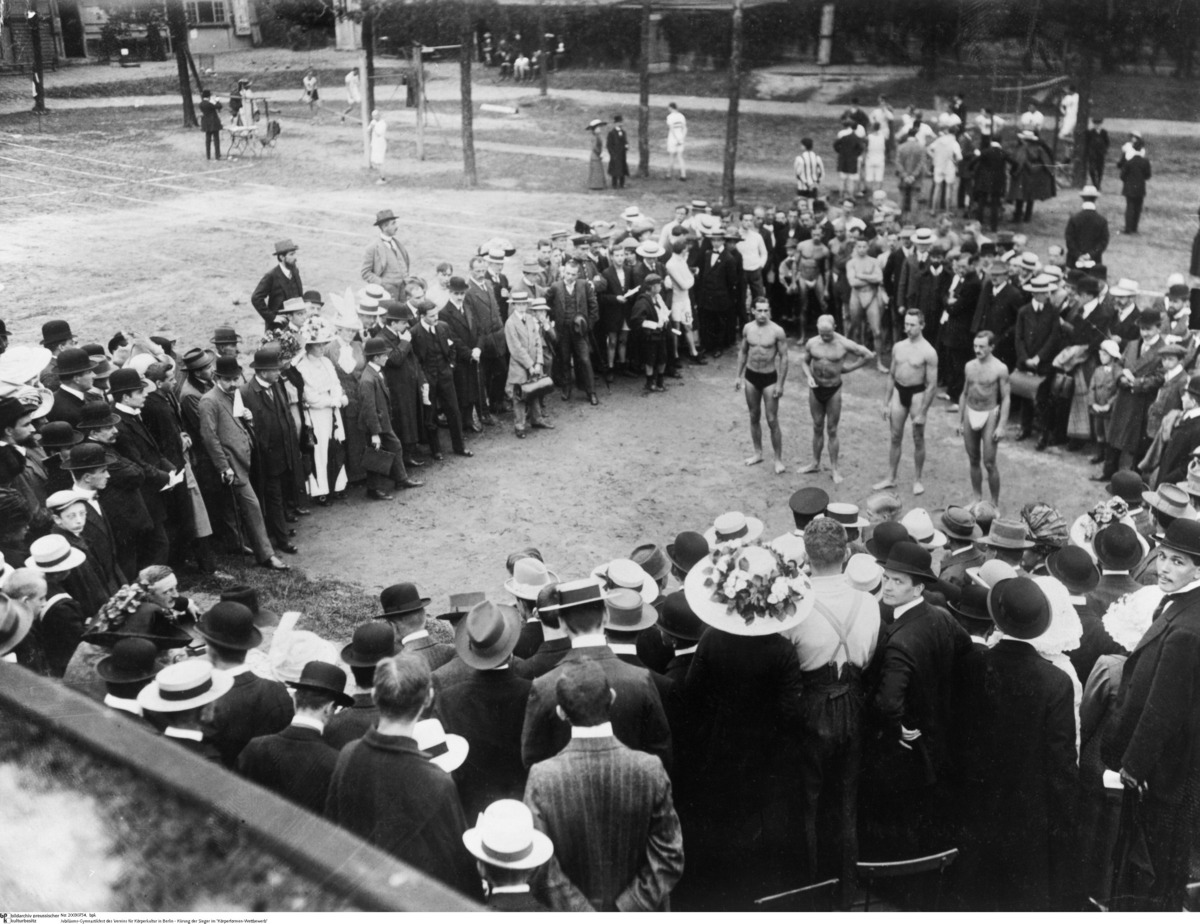Source

Source: bpk-Bildagentur, image number 20030754. For rights inquiries, please contact Art Resource at requests@artres.com (North America) or bpk-Bildagentur at kontakt@bpk-bildagentur.de (for all other countries).
Around the turn of the century, societies for physical culture sprang up throughout Germany. These societies belonged to the larger German Lebensreform – or “life reform” – movement, which advocated healthier living through a return to nature, fresh air, exercise, natural food, experiments in communal housing, and new forms of spirituality, which often drew upon Eastern traditions. Lebensreform was a reaction to overcrowding, overwork, and poor living conditions, all of which resulted from Germany’s rapid industrialization in the late nineteenth century. The healthy, youthful body – as here evidenced by “the victors of the body shape contest” – became the unifying symbol for disparate currents within the larger health movement. It should be noted, however, that physical fitness and gymnastics clubs were not entirely new in Germany.

Source: bpk-Bildagentur, image number 20030754. For rights inquiries, please contact Art Resource at requests@artres.com (North America) or bpk-Bildagentur at kontakt@bpk-bildagentur.de (for all other countries).
bpk